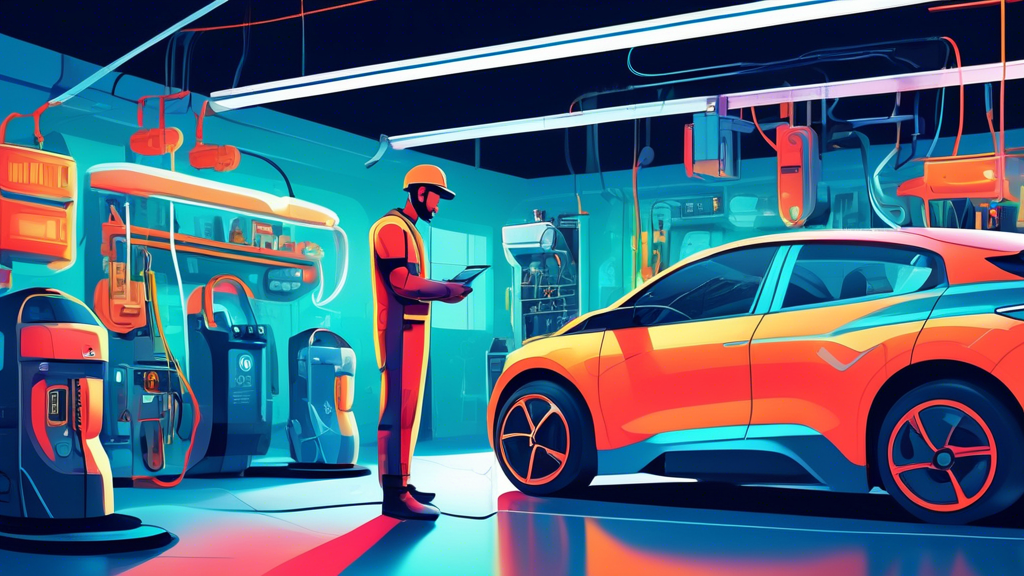
EV, Hybrid, and Plug-In Hybrid Maintenance: Navigating the Mechanical Jungle
So, you’ve taken the plunge into the future of motoring, waving goodbye to the days of solely gas-powered engines and welcoming the era of electric vehicles (EVs), hybrids, and plug-in hybrids (PHEVs). But as you admire your eco-friendly steed, a question arises: What about maintenance? What is the difference between EV, Hybrids, and Plug-in Hybrids maintenance? Fear not, dear eco-warrior, for we’re here to demystify the maintenance maze of these futuristic chariots. Fasten your seatbelt; it’s much easier than programming your smart TV.
Electric Vehicles (EVs): The Low-Maintenance Marvels
EVs are like that low-maintenance friend who’s always easy to hang out with – no drama, no fuss. Electric vehicles don’t require oil changes, spark plugs, air filters, or other engine components that require regular maintenance. Your primary concern? The battery, the heart, and the soul of your EV. While it doesn’t require regular maintenance, its health is crucial for your vehicle’s range and overall performance. Think of it as ensuring your smartphone has a good battery life, except maybe don’t put it in rice if it gets wet.
Another aspect to consider is the braking system. EVs use regenerative braking, which recharges your battery as you slow down, reducing wear and tear on the brake pads. This means fewer workshop trips and more time to enjoy the silent hum of your electric ride.
Hybrid Vehicles: The Best of Both Worlds
Hybrids are like the middle child, balancing the benefits of gas engines and electric power. They require more attention than their full-electric siblings but are less fussy than traditional cars. Yes, you’ll still need to pamper them with oil changes and occasionally replace the spark plugs and air filters, but thanks to their electric component, they tend to be easier on their brakes and other parts.
Hybrids have two hearts beating under their hoods: an internal combustion engine (ICE) and an electric motor, each taking turns to propel you forward efficiently. This duality means you must keep an eye on the engine-related components while also being mindful of the battery’s condition. It’s like owning a cat and a dog; they need different care, but both contribute to your happiness.
Plug-In Hybrid Vehicles (PHEVs): The Plug Matters
PHEVs are hybrids that can charge from an external source. They have a longer electric-only range than regular hybrids, reducing gas station visits and carbon footprint.
Maintenance-wise, PHEVs are akin to hybrids but require a little extra attention to the battery due to their larger size and capacity. Think of it as having a more extensive garden; it’s more enjoyable and enjoyable. You have the engine to maintain and the electric drive to consider. However, like EVs, the regenerative braking system helps reduce wear on the brake pads, which is a win-win in any book.
Final Thoughts: Navigating Your Maintenance Needs
Regardless of your choice, transitioning to an EV, hybrid, or PHEV is akin to upgrading your tech game. Maintenance becomes more about software updates and battery health and less about oil changes and exhaust systems. Each vehicle type offers its unique blend of maintenance needs, with EVs being the clear winner in the least likely to cause a headache category. Hybrids and PHEVs, however, strike a balance, offering a taste of electric efficiency with a sprinkle of traditional maintenance.
Keeping your eco-friendly ride happy doesn’t require a PhD in rocket science. A dash of attention, a sprinkle of care, and regular check-ups are all you need to keep cruising the green way. After all, isn’t it nice to worry less about what’s under the hood and more about where your next adventure will take you?
